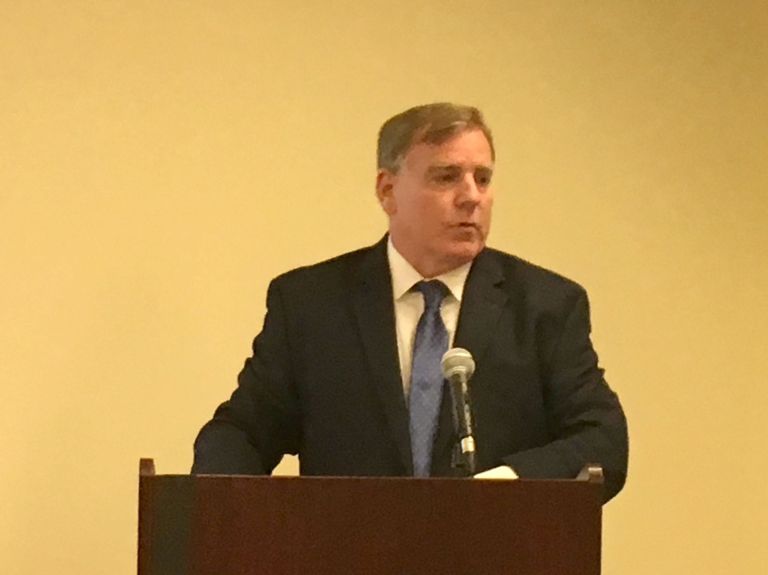
Residents of some North Shore school districts saw their property taxes rise this year even though their districts’ tax levies stayed flat or decreased.
Changes to the proportions of Nassau County’s four taxpayer classes this year shifted more of the tax burden to residents and businesses and away from apartment buildings and utility properties in some districts.
That left surprised residents facing bigger tax bills in the East Williston school district, which did not increase its total tax levy, and in the Mineola school district, where the tax levy fell slightly, officials said.
“You don’t know after we vote on our levy how they’re going to change the proportion of the pie,” said Michael Nagler, the Mineola school district superintendent.
The changes are largely an effect of Nassau County’s property tax system that allows homeowners to dispute their tax bills, school district and county officials said.
Lump-sum payments for properties no longer on the tax rolls — namely those owned by the Long Island Power Authority — also play a role in East Williston, officials there said.
“If I’m a resident, which I am, if I’m a taxpayer, which I am, I’m furious at Nassau County,” said Mark Kamberg, the East Williston school board president.
Each year, the Nassau County assessor’s office determines what percentage of each school district’s property falls into each of four taxpayer classes — residences, apartments, utility properties and businesses. Each class’s percentage is called the adjusted base proportion.
The percentage of residential and business properties in Mineola and East Williston each rose slightly this year, leaving those taxpayers footing more of the district’s total tax bill, school officials said.
Combined with a decrease in the total assessed property value across the board, that caused the tax rates for residents and businesses to rise while the utility tax rate is set to fall in both districts, officials said.
Though the East Williston district’s tax levy stayed flat, the tax rate rose 3.71 percent to $931 per $100 of assessed value for homeowners. Homeowners hold 94.4 percent of the property, up from 94.17 last year.
Businesses comprise about 4.2 percent of the property and are seeing an increase of nearly 15 percent to $288 per $100 of assessed value. Utilities, though, comprise about 1.2 percent of the property and are seeing their tax rate fall by 12.4 percent.
In Mineola, homeowners’ tax bills are rising an average of 3.83 percent although the district’s total tax levy is falling by 0.012 percent. Homeowners account for about 53.98 percent of the property, up from 53.13 percent last year.
In the Roslyn school district, the homeowners’ tax rate is increasing 3.5 percent despite the total tax levy increasing only 0.3 percent, said Barry Edelson, a district spokesman. Their adjusted base proportion increased by 0.6 percent and the total assessed value decreased by 2.5 percent, Edelson said.
The tax rate for each class is calculated by dividing its portion of the total tax levy by its total assessed property value. That means the rate increases if the adjusted base proportion rises or the assessed value falls.
When both happen simultaneously, as with this year, it’s a “double-whammy” for taxpayers, Nagler said.
The adjusted base proportion shifts each year based on brick-and-mortar changes to properties and real estate market fluctuations, said Michele Spara, a deputy Nassau County assessor.
When proportions for some classes decrease, others must increase to pick up the difference, Spara said.
The total assessed value generally falls each year because many residents and businesses challenge their assessments and get them revised downward, Spara said.
That means tax bills would likely rise even if the adjusted base proportion and total tax levy stay flat, Spara said.
“If somebody’s not paying their fair share, somebody else is always going to,” Spara said.
Properties that make payments in lieu of taxes, or PILOTs, come off the tax rolls, lowering that class’s adjusted base proportion and often shifting the burden onto residents and businesses, Pirro said.
That’s what happened in East Williston and other Nassau school districts when LIPA’s parcels went off the tax rolls under state law, Pirro said.
But a senior LIPA official said the authority has paid PILOTs since 1998, and its properties have nothing to do with changes to the adjusted base proportion for the utility class.
Nassau County’s efforts to resolve issues with commercial property assessments may have driven those changes, the official said.
LIPA’s payments for the last school year initially came up short because of a disagreement with Nassau County that became the subject of a lawsuit between LIPA, the county and its 56 school districts. LIPA’s payments cannot increase more than 2 percent over the prior year under the 2013 LIPA Reform Act.
The power authority has since paid the full amount it was billed for last year, but it will take a discount on future payments before the end of this year under a settlement of the lawsuit.
The Mineola school district gets PILOTs from LIPA and from the commuter apartment complexes.
Though they can affect the adjusted base proportions, PILOTs do give districts revenue for which they don’t have to ask taxpayers, said Jack Waters, Mineola’s assistant superintendent for finance and operations.
“It’s not a dollar-for-dollar trade-off, but it certainly helps,” he said.
More residents are understanding why their tax bills go up, Spara said, but “at the end of the day they’re unhappy because the taxes are so high.”
Max Zahn contributed reporting.
Reach reporter Noah Manskar by e-mail at nmanskar@archive.theisland360.com or by phone at 516.307.1045 x204. Also follow us on Twitter @noahmanskar and Facebook at facebook.com/theislandnow.






